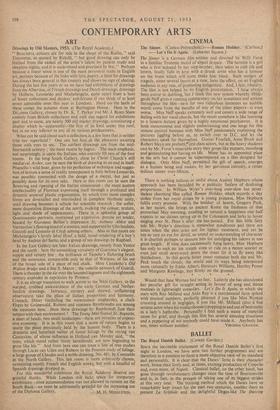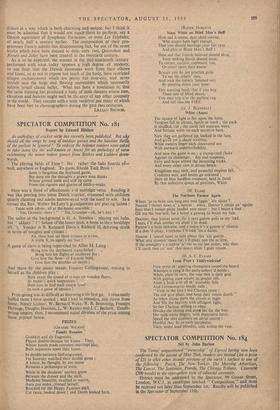BALLET
The Royal Danish Ballet. (Covent Garden.) SINCE the inevitable excitement of the Royal Danish Ballet's first night in London, we have seen two further programmes and are therefore in a position to form a more objective view of its standard and personality. It is clear that the Danes' forte is their character work, hence their lively and, at times, exciting production of Coppclia and, even more, of Napoli. Classical ballet, on the other hand, has gone through revolutionary changes since the time of Bournonville and is, in fact, in the process of taking one of its biggest strides at this very time. The training method which the Danes have so remarkably kept intact for the past two centuries, enables them to present La Sylphide and the delightful Degas-like The Dancing School in a way which is both charming and unique, but I think it must be admitted that it would not equip ,,them to perform, say a Danish equivalent of Symphonic Variations,' or even Les Sylphides, of nearly half a century earlier. The composition of their pro- grammes frankly admits this disappointing fact, for out of the seven works which have been danced to date, only two, Qarrtsiluni and Romeo and Juliet have been created in the twentieth century.
As is to be expected, the women in the mid-nineteenth century performed with what today appears a high degree of modesty, so one finds that the Danish danseuses work from their elbows and knees, so as not to expose too much of the body, have restricted allegro enchainements which are pretty but over-coy, and never stretch into the large and flowing movements which necessarily inform lyrical classic ballet. What has been a revelation is, that the same training has produced a body of male dancers whose ease, elevation and batterie might well be the envy of' any other company in the world. They execute with a wide varietyof pas many of which have been lost to choreographers during the past two centuries.
LILLIAN BROWSE.



























 Previous page
Previous page